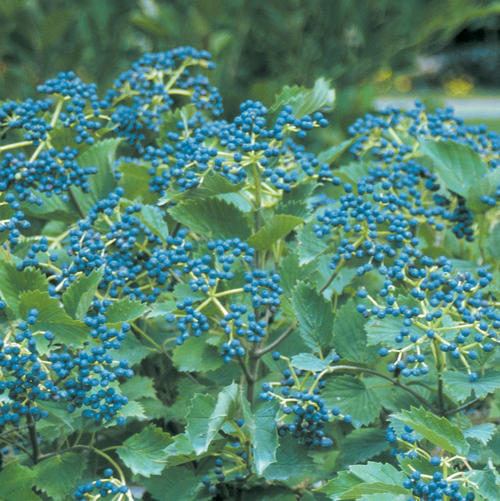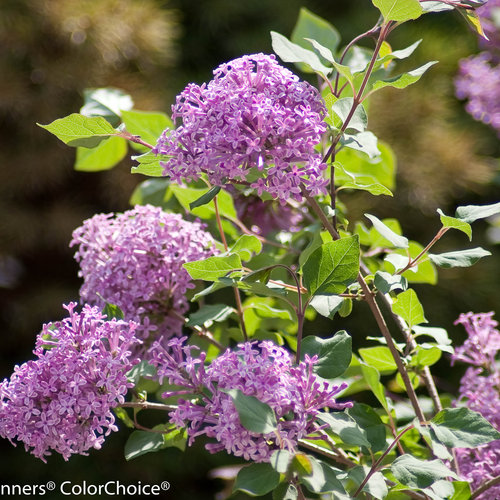Shrubs to Attract Birds
Watching birds flit about in the garden is one of life's little joys.
Attract birds to your garden with these lovely shrubs!
ViburnumViburnums are the stalwart of any good shrub border and not surprisingly they are also equally important plants for creating good bird habitat. Viburnums provide everything from canopy that shelters the nests of smaller songbirds to a plethora of colored berries that birds love to feast upon. The fruit on Viburnum ranges in color from yellow, pink, red, and blue with many aging to black. A great choice for a red fruit viburnum is Red Balloon®. For blue fruit try a variety like Blue Muffin® if you already have an arrowwood viburnum in the garden or try the two-for-one Glitters & Glows®. You get the worry-free combination of two cross-pollinating plants in one pot, so you're sure to get those fabulous blue berries. Now if you're up for a bit of a wilder show, you'll love Brandywine™ which has both pink and blue berries. This is but a brief list of the Viburnums that are excellent for attracting songbirds like the cardinal to your garden. | |
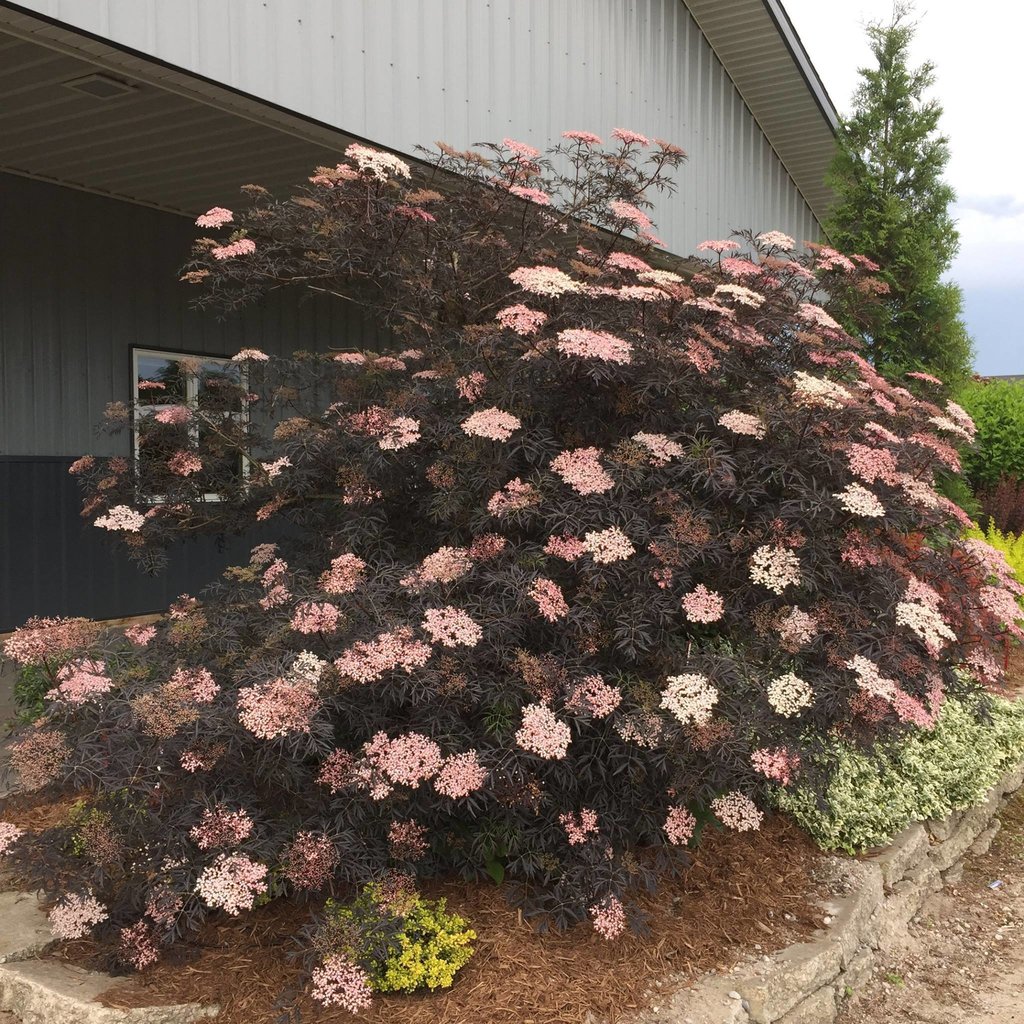 Indigo Bunting, Oriole, Eastern Bluebird, Grosbeak(s), Song Sparrow | Elderberry - SambucusElderberries are a group of plants that are wonderful for birds. They flower in late spring and in summer are covered with large clusters of berries. Some varieties offer cut leaf foliage in greens and in golds like Lemony Lace®. Then there are varieties that have dark purple foliage and fragrant pink flowers like Black Lace®. To get berries, you'll need to plant another elderberry of the same species to cross-pollinate. For example, you could plant a Black Lace® and a Laced Up® and get berries. |
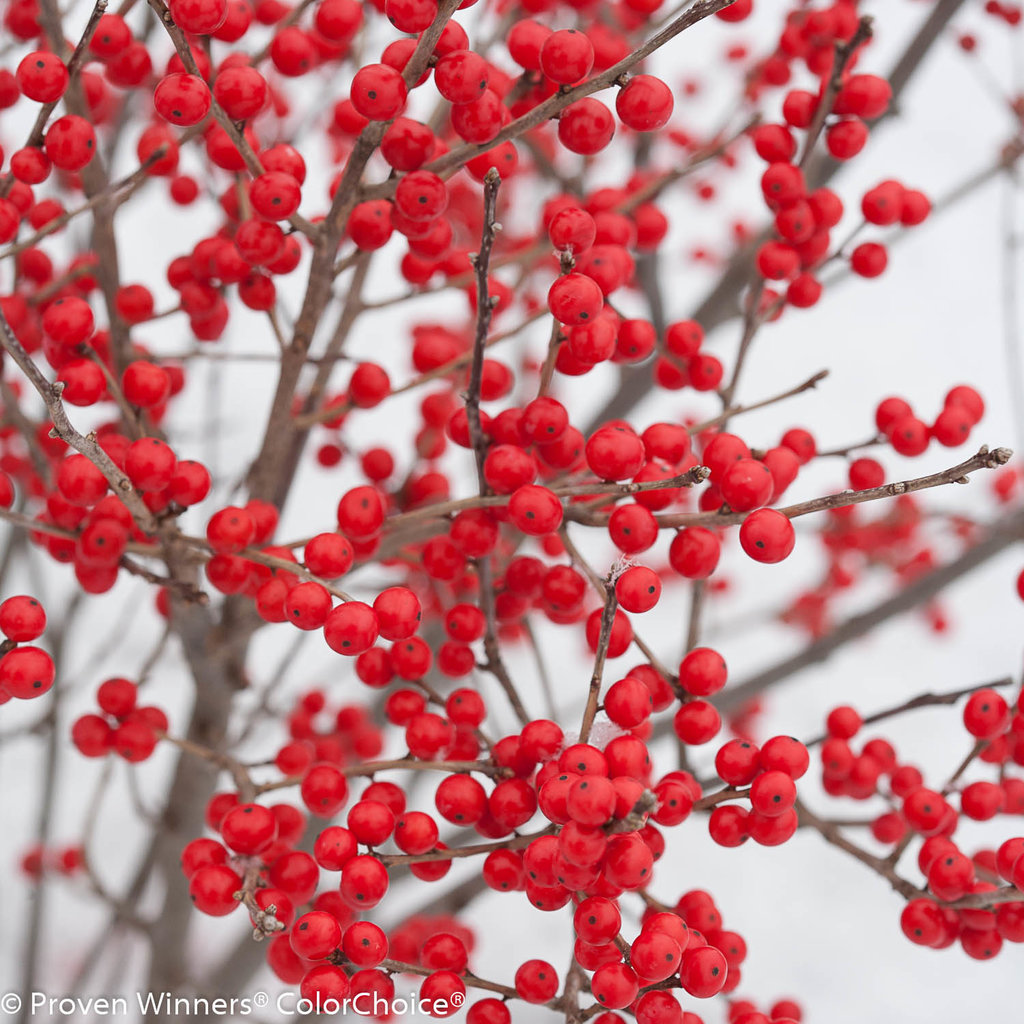 Eastern Bluebird, Robin, Cedar Waxwing | Holly - IlexThe Ilex family is a group of plants that ties in perfectly with attracting birds. Try one of the evergreen hollies like Castle Spire® blue holly. Birds love the protection that the foliage provides year-round and the red berries make a wonderful accent during the fall and winter months. Some branches may even find their way onto your holiday table! Varieties like Berry Poppins®, Berry Heavy® are great for bird habitat and as a food supply. Imagine their brilliant red berries accenting some evergreens during the Christmas season. |
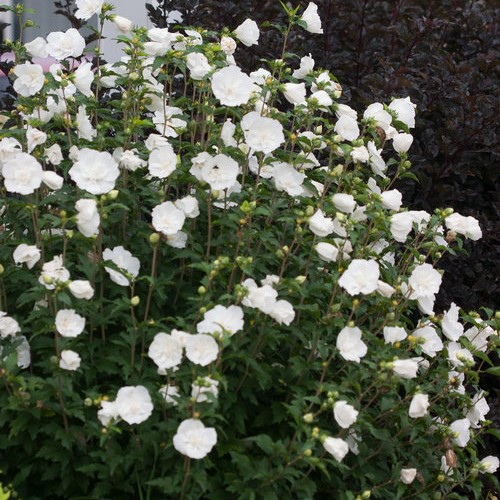 Hummingbirds | Rose of Sharon - HibiscusHummingbirds love the nectar provided by solid colored Hibiscus syriacus varieties like Dark Lavender Chiffon® & White Chiffon®, and showier varieties like Paraplu Pink Ink®. They put on a stunning show in late summer with both the plentiful flowers and the battling hummingbirds they draw in. Add in some perennial Summerific® hibiscus and you’ll have a stunning display of color and a feast for the birds. |
| Lilac - SyringaLilacs provide nectar early in the season when there are limited food supplies for hummingbirds. Hummingbirds love the nectar just as much as we love its intoxicating fragrance. This combination is all the more reason to set up a display, especially near your nectar feeders. If you have a few different types of lilacs you can extend your flower show beyond the normal two weeks. Consider adding early flowering lilacs like Scentara Pura®, along with late hybrid lilacs like Baby Kim®. |
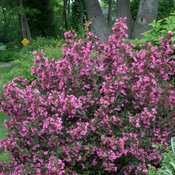 Hummingbirds | WeigelaThe flowers of a Weigela with their trumpet-shaped flowers are loved by hummingbirds. One of the best is Wine & Roses® because it not only has rich fuschia-magenta flowers but the flowers are also complemented by dark wine burgundy foliage. This combination of flowers and foliage makes Wine & Roses® attractive even when it is not in flower. There are many other varieties of Weigela that are available to fit smaller landscapes that are more compact in size reaching only four feet at maturity. |
Birds need shelter as well as food, so make sure your yard has some evergreen shrubs and trees to help protect birds from the wind, as well as plants with winter berries (like those listed) to provide a winter source of food.
Many of the shrubs listed above need to be planted and mixed with other types of the same plant, in order to maximize the amount of berries produced each year. You can find this information and also winter hardiness zones by clicking on the link for each plant.



